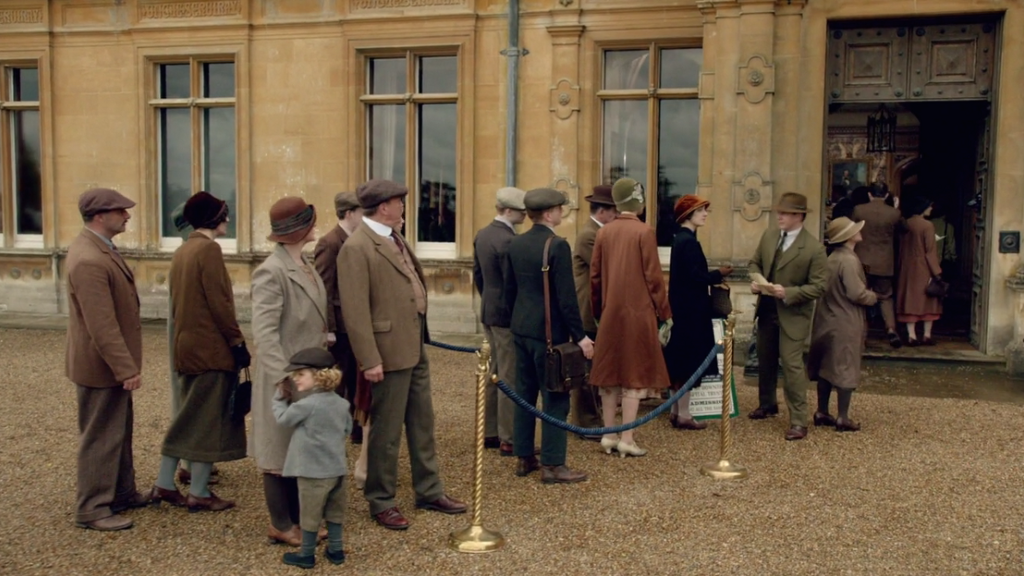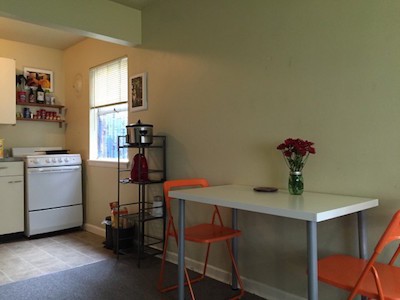Making Money Off Your Life: Let’s Talk About Downton Abbey, Season 6 Episode 6

Contains spoilers for Downton Abbey, Season 6 Episode 6. If you’ve seen other season 6 episodes, let’s keep the discussion just on episode 6 to avoid spoiling anyone else.
“What are they paying to see?” Lord Grantham asks, before listing off what he considers Downton’s minor assets—inferior to anything you could get at, say, a museum.
“People want to see a different sort of home,” Mary explains.
“There’s a curiosity about these places, about this way of life,” Tom adds.
In other words: even if you don’t have as much as you once did, or as much as previous generations had, you can still make money by allowing people a glimpse into your private life, and you can make even more money if you have a compelling story or personality.
You can probably guess what I want to discuss today.

Usually I can pull out the comparison that Fellowes and the Downton team are trying to make; in this case, I very much doubt that they were making any kind of comparison to people who, like me, write transparently about their lives for the internet—and yet I couldn’t watch this episode without thinking of it, and how I have invited you all into my own home with its own minor artwork (which is to say, postcards I have taped to the wall).
What $496.42 in Ikea Furniture Looks Like
Or, as the Dowager Countess puts it: “Roll up! Roll up! Visit an actual dining room, complete with a real-life table and chairs!”

Of course I don’t have an actual dining room—although I do finally have a place to eat that is not my work desk, which should help me with my taxes this year—and my table and chairs cost $84.95 at Ikea.

What I do have is the willingness to tell you that my table and chairs cost $84.95 at Ikea, the agreeableness to make a joke about it, and the self-awareness to understand that not everyone has the financial capacity to even spend that much on their “dining room set;” a lot of us are still sitting on the uncomfortable or mismatched chairs we thrifted years ago, and my cute orange folding chairs and green Mason jar vase become aspirational.

Here’s what else is aspirational: my career. I don’t really think a lot of people wish they had my apartment, although it’s perfectly fine on its own merits, but a lot of people reach out to me to learn more about freelancing or about making money as a writer.
So that, in turn, draws more attention towards me and gives me the opportunity to do more paid work—and to write more stories about myself, inviting people into my life and my home.

The Downton Abbey home tour assumedly did not extend to the kitchens or any of the rooms occupied by the people who do the bulk of the work, and although I have never tried to draw attention away from the actual work that makes up my day, I’ve found it much easier to write about what I wear to work from home than the work I actually do.
What I Wore to Work From Home (and How Much it Cost Me)
Nobody really wants to read about answering emails and the business of typing out 10,000 words a week and prepping them for publication. We all answer emails. Most of us type many more words than we realize, when you consider all of the emailing and messaging and texting and Slacking and Gchatting and Tweeting.
So I focus my personal writing on the problems that we have to solve in order to do our work: What do we wear? When do we do laundry, and where do we get the quarters? How do we buy groceries, and when do we find time to cook the food? How do we organize and track our work and personal lives, and how do we keep everything balanced?

Of course the other reason people are attracted to personal stories, whether they’re online or on reality television shows, is because they’re looking for the conflict and the drama. They’re waiting to see what people do when they’re angry or stressed, and they’re waiting for the moment when one of us does something embarrassing or revealing—that extra bit of human that’s always hiding behind the humanity we cultivate in ourselves and try to present to the world.
And yes, the Dowager Countess delivers.

The Crawleys quickly learn that they cannot control their audience, and I should make a joke about future Downton tours requiring complete silence from the participants, as a reference to “don’t read the comments.”
(Unless they’re Billfold comments. Because y’all are the best community on the internet, and the biggest reason why I am so willing to share my life in this space every day.)

The first Downton Abbey tour is to raise money for the hospital, but the Crawleys quickly realize that they can earn even more money—and keep it for themselves—if they continue to allow people into their lives.
“We can’t ignore such a large source of income at our fingertips,” Tom says.
It’s remarkably easy to earn money by being yourself. I know this is where I should say that it’s hard, that not everyone can become a full-time personal essay writer or vlogger or anything like that, and both of those statements are true—but once you have a toehold in a career, the balance shifts and it starts to feel like the most natural thing you’ve ever done.
I love to write pieces that turn into conversations, using examples from my own life as the prompts.
After all, it’s what I just did.
Previously: “I Won’t Marry Down:” Let’s Talk About Downton Abbey, Season 6 Episode 5
Support The Billfold
The Billfold continues to exist thanks to support from our readers. Help us continue to do our work by making a monthly pledge on Patreon or a one-time-only contribution through PayPal.
Comments